![53771026[1]](http://corbamtb.com/news/wp-content/uploads/2010/06/537710261-300x260.gif) A proposal would protect more of the mountain range and its rivers.
A proposal would protect more of the mountain range and its rivers.
The river ripples cold around his waders as Bill Reeves casts a dry fly onto a pool edged with alders on the bottom of a canyon deep in the San Gabriel Mountains.
Reeves, 69, who first fished this stretch of the San Gabriel River’s west fork with his father more than half a century ago, was in his element — scanning the eddies for rising wild trout in a wilderness that resurrected childhood memories.
“I’d be happy if this place stayed just the way it is,” the stout conservationist said. “But with 10 million people living within an hour’s drive, these mountains definitely need more protection.”
Reeves is a member of San Gabriel Mountains Forever, a campaign that is pushing Rep. David Dreier (R-San Dimas) to fashion a bill that would shield a larger portion of the 655,000-acre range and its free-flowing rivers from pollution and population woes with the strongest federal protections available.
The goal is to add 30,000 acres to three existing wilderness areas and have 44 miles of San Antonio Creek, the middle fork of Lytle Creek and portions of the San Gabriel River’s east, west and north forks protected under the national Wild and Scenic Rivers Act, which would prohibit new damming.
Today, only a 7-mile stretch of Piru Creek, in the northern San Gabriel Mountains, is designated as wild and scenic.
Conservationists fear that time is running out. Encroachment from foothill subdivisions in the San Gabriel Valley and Lancaster, cuts to the U.S. Forest Service budget, arson fires and millions of annual visitors are eroding the qualities that make the mountains special, they say.
“Our aim with this proposal is to protect the one-third of the Angeles National Forest that is still unspoiled open space,” said John Monsen, regional representative of the Sierra Club, one of several environmental groups in the campaign, including the Wilderness Society and Friends of the River. “The trick is to get it introduced in time for this Congress to vote on it. If it is delayed another year, there is no telling what will happen.”
![53758225[1] Down the mountain (Brian van der Brug / Los Angeles Times)](http://corbamtb.com/news/wp-content/uploads/2010/06/537582251-300x196.jpg)
Hikers follow a trail near the middle fork of Lytle Creek in the Cucamonga Wilderness. "Our aim with this proposal is to protect the one-third of the Angeles National Forest that is still unspoiled open space," said John Monsen, regional representative of the Sierra Club. "The trick is to get it introduced in time for this Congress to vote on it. If it is delayed another year, there is no telling what will happen."
Dreier, whose district includes much of the range, is seeking input and support for the plan from the myriad cities, environmental and recreational organizations, fire departments, flood control agencies and water districts laying claims on the watershed, which provides Los Angeles County with 70% of its open space and roughly 35% of its water.
As part of an effort to avoid conflict, San Gabriel Mountains Forever has altered proposed wilderness boundary lines to accommodate utility company and water district easements, and has added specific language to its proposal to ensure that the Los Angeles County Fire Department has access to wilderness areas in the event of an emergency.
Dreier was unavailable for comment. But his legislative director, Alisa Do, said, “the congressman is committed to seeing it through.”
“But we have to be careful and cautious because this area is prone to wildfires and flooding,” she said. “Any change we make would be permanent, so the congressman continues to do his due diligence to ensure this process is done correctly.”
So far, nine cities, including Claremont and La Canada-Flintridge, have filed letters and passed resolutions in support of the proposal, which is also backed by dozens of San Gabriel Valley churches.
Negotiations continue, however, with the Los Angeles County Department of Public Works, which is worried about potential impacts on its ability to operate crucial flood control and reservoir systems.
Of particular concern is Cogswell Dam, a remote county flood control operation that looms over an 8-mile-long stretch of the San Gabriel River’s west fork proposed for wild and scenic status.
The operation controls the flow in the stream, which provides some of the best fly fishing in Southern California and helps recharge the metropolitan aquifer in the flatlands below. It also has an easement for the 8-mile-long asphalt lane connecting the dam to Highway 39.
“We support the conservation effort being proposed by San Gabriel Mountains Forever,” said Mark Pestrella, the county deputy director of public works. “But they have to recognize that we run a very large system that includes man-made dams up there that provide water and safety for millions of people. We want to make sure that we are not giving away rights to some critical future need.”
Stretching in an oblong mass from Santa Clarita to San Bernardino, the mountains’ wrinkled slopes and lush canyons are also defined by the habitat and wanderings of many rare and endangered species, including Nelson’s bighorn sheep, mountain yellow-legged frogs, Santa Ana suckers and Pacific pond turtles.
Yet, on a recent weekday, picnic sites and trail heads along Highway 39 north of Azusa were strewn with trash, broken glass and discarded lawn chairs and ice chests. Interpretive signs and boulders as big as billboards were covered with graffiti. Picnickers fished and waded in a stream that has turned the color of coffee because of sediment and ash from the Station Fire, the devastating arson blaze of last year.
Marty Dumpis, deputy forest supervisor for the U.S. Forest Service, which manages the range, believes the proposal would focus additional attention on the San Gabriels and their need for “more resources and educational programs.”
As it stands, the financially strapped Forest Service relies on volunteers to help pick up trash, remove graffiti, patrol picnic areas and run conservation and educational programs. Among them are D.D. Trent, a geologist, and Ronald Quinn, a professor of biological sciences at Cal Poly Pomona.
On a recent weekday, Trent and Quinn led a hike along the middle fork of Lytle Creek, a network of cascading snowmelt, ponds and wetlands rolling out of a rugged canyon thick with sycamores, alders, oak and Douglas fir trees.
As a botanist, Quinn marveled at the living bluish-green blanket of shrubs collectively known as chaparral — holly-leafed cherry, Indian paintbrush, white sage, chemise, wild onions, manzanita — covering the mountains’ shoulders.
As a geologist, Trent admired the “restless, adolescent peaks being squeezed upward by a giant vice of tectonic strain. If not for the intensity of the erosion, these would be the tallest mountains in the world.”
But as occasional weekend hikers in the canyon, they were confounded that a great majority of the people who live only a few minutes away never glimpse its backcountry trails.
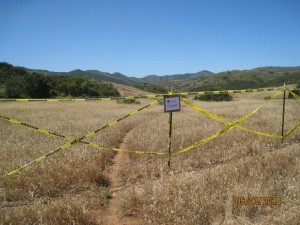 More trails, this time in Point Mugu State Park, have been deemed unauthorized and marked with signs and fencing designating them as closed (View our earlier article on Malibu Creek State Park). One trail, known as “Art’s Trail,” connects Sage Trail and Sin Nombre, paralleling the paved road that leads to Wood Canyon. Two other shorter trails connect to the paved road farther to the west. Here is the narrative and explanation given for these actions from Dennis Dolinar, District Maintenance Chief, Angeles District, California State Parks:
More trails, this time in Point Mugu State Park, have been deemed unauthorized and marked with signs and fencing designating them as closed (View our earlier article on Malibu Creek State Park). One trail, known as “Art’s Trail,” connects Sage Trail and Sin Nombre, paralleling the paved road that leads to Wood Canyon. Two other shorter trails connect to the paved road farther to the west. Here is the narrative and explanation given for these actions from Dennis Dolinar, District Maintenance Chief, Angeles District, California State Parks: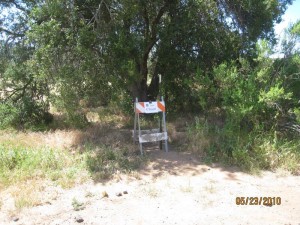 At this point in time, the trail entrances have been closed by use of simple barriers and fences but there are no immediate plans to destroy the trails themselves. The hope is that we can stop and/or minimize the use of this set of trails until such time as staff can evaluate the park resources that are potentially effected by these types of visitor use. Many of the people I spoke with out on the trail last weekend were disappointed but seemed to understand the need for us to manage this issue.
At this point in time, the trail entrances have been closed by use of simple barriers and fences but there are no immediate plans to destroy the trails themselves. The hope is that we can stop and/or minimize the use of this set of trails until such time as staff can evaluate the park resources that are potentially effected by these types of visitor use. Many of the people I spoke with out on the trail last weekend were disappointed but seemed to understand the need for us to manage this issue.

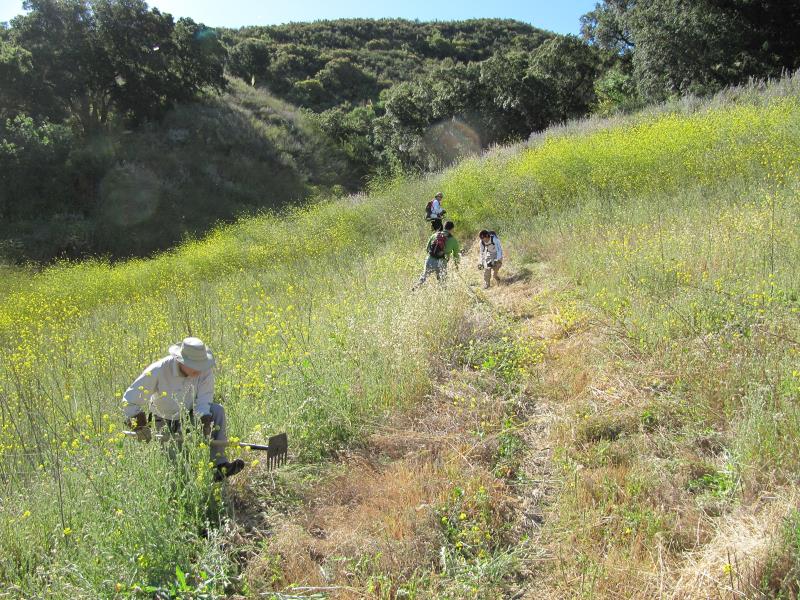
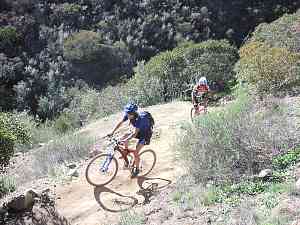

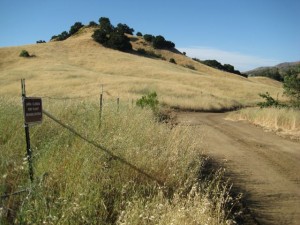
![53771026[1]](http://corbamtb.com/news/wp-content/uploads/2010/06/537710261-300x260.gif)
![53758225[1] Down the mountain (Brian van der Brug / Los Angeles Times)](http://corbamtb.com/news/wp-content/uploads/2010/06/537582251-300x196.jpg)

